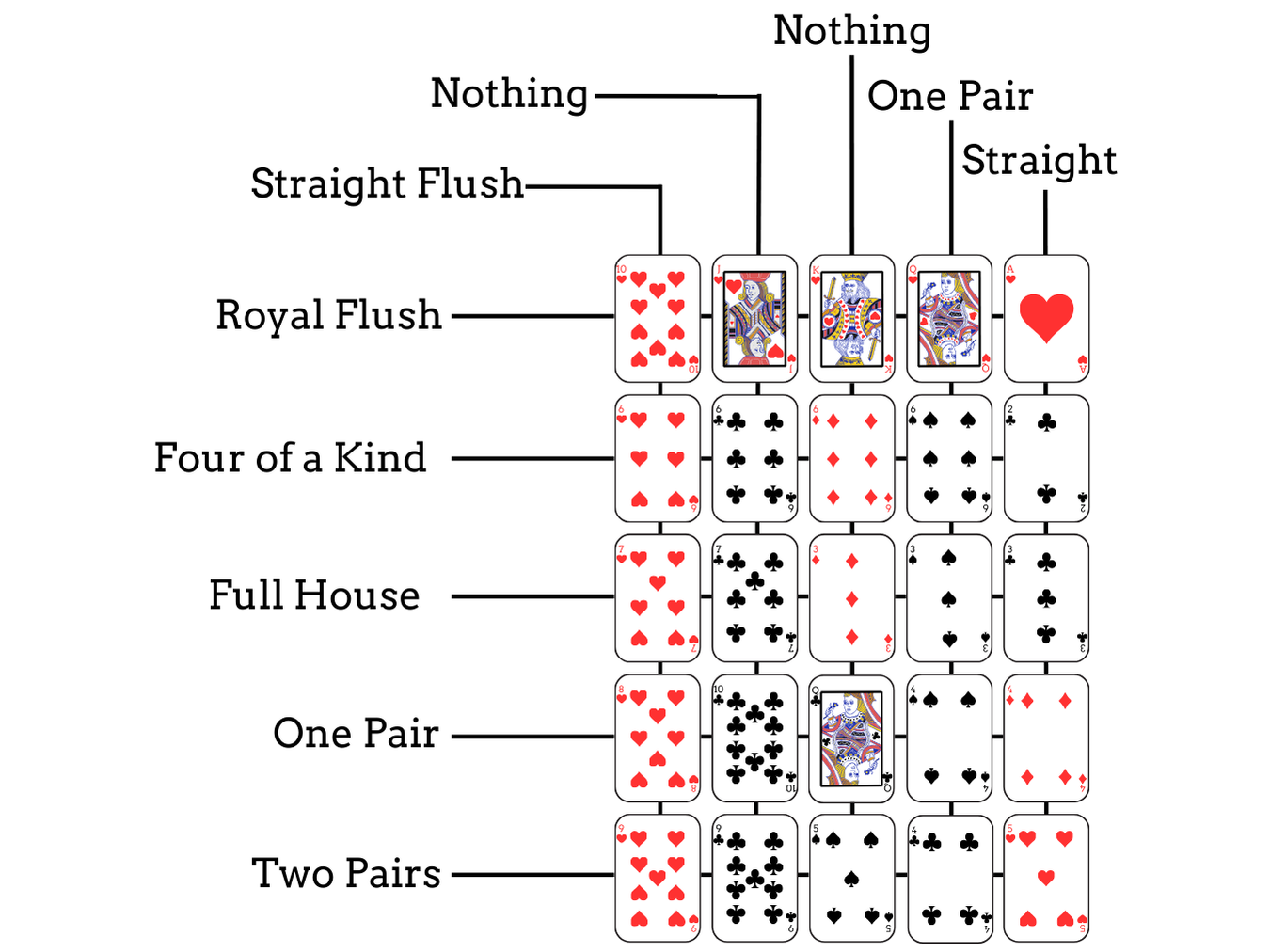How to Play Poker Solitaire
Poker Solitaire Rules
| Players: 1 | Type: Solitaire | Supplies: 1 Deck |
Objective
The objective of Poker is to achieve the highest score possible across 10 poker hands.
Setup
Set up room for 25 tableau cells in a five-by-five grid that starts empty. Place the entire deck face up to form the stock. Pictured for reference is a completed game of Poker.

Game Play
The top card of the stock is available for play onto any empty tableau cell. Each tableau cell may only contain one
card. Once a card is placed in a tableau cell, it cannot be moved. Each row and each column count as a “poker hand,”
where you can potentially score points. The cards do not have to be in any specific order in the individual rows or
columns, as long as the row or column contains the correct cards to score the points. If any of the individual rows or
columns have any of the following card combinations in them, you earn the points associated with that combination:
Royal flush (30 points): 10, jack, queen, king, and ace of all the same suit.
Straight flush (30 points): 5 cards of the same suit that can make a sequence.
Four of a kind (16 points): 4 cards of the same rank and any other card.
Full house (12 points): 3 cards of the same rank and 2 matching cards of a different rank.
Flush (10 points): 5 cards that have the same suit and cannot make a sequence together.
Straight (6 points): All 5 cards can make a sequence, but are not in the same suit.
Three of a kind (5 points): 3 cards of the same rank and any other 2 cards.
Two pairs (3 points): 2 pairs of cards that match in rank and any other card.
One pair (1 point): 1 pair of cards that match in rank and any other 3 cards.
Nothing (0 points): If you fail to make any of the above combinations.
A sequence is considered five cards that could be arranged in numerical order. For example, the first column on the left
contains the 10 of hearts, 6 of hearts, 7 of hearts, 8 of hearts, and 9 of hearts. Since these cards could be rearranged
from 6 to 10, they make a sequence, even though they are not arranged in order.
When all 25 tableau piles have been filled, the game is over; tally up your score. You have 10 opportunities to score
points for a poker hand. Each of the five individual rows and each of the five individual columns may count towards
points. You may only score for one combination per row and column. The same combination may appear on multiple hands,
which is ok. For example, in the completed game of Poker shown above, there is a row with one pair and a column with one
pair, so you would score for both of these hands. Add up all points from all rows and columns to determine your final
score.
To Win
If your total score between the 10 hands is over 70 points, you win. Otherwise, you lose.
Variation
With further research, you may discover multiple ways to score in this game. One approach you could take is to try and beat your previous score.